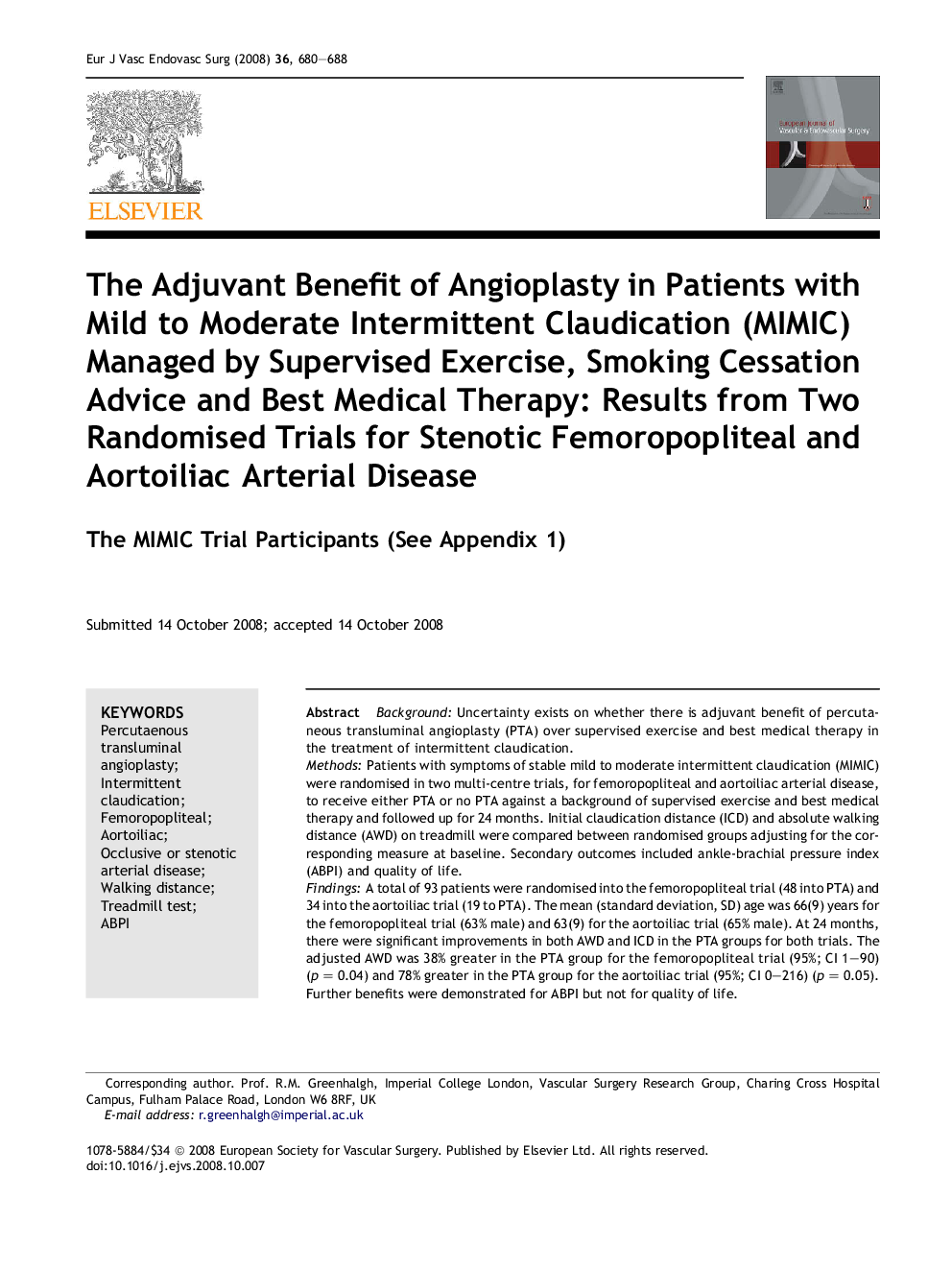| Article ID | Journal | Published Year | Pages | File Type |
|---|---|---|---|---|
| 2914534 | European Journal of Vascular and Endovascular Surgery | 2008 | 9 Pages |
BackgroundUncertainty exists on whether there is adjuvant benefit of percutaneous transluminal angioplasty (PTA) over supervised exercise and best medical therapy in the treatment of intermittent claudication.MethodsPatients with symptoms of stable mild to moderate intermittent claudication (MIMIC) were randomised in two multi-centre trials, for femoropopliteal and aortoiliac arterial disease, to receive either PTA or no PTA against a background of supervised exercise and best medical therapy and followed up for 24 months. Initial claudication distance (ICD) and absolute walking distance (AWD) on treadmill were compared between randomised groups adjusting for the corresponding measure at baseline. Secondary outcomes included ankle-brachial pressure index (ABPI) and quality of life.FindingsA total of 93 patients were randomised into the femoropopliteal trial (48 into PTA) and 34 into the aortoiliac trial (19 to PTA). The mean (standard deviation, SD) age was 66(9) years for the femoropopliteal trial (63% male) and 63(9) for the aortoiliac trial (65% male). At 24 months, there were significant improvements in both AWD and ICD in the PTA groups for both trials. The adjusted AWD was 38% greater in the PTA group for the femoropopliteal trial (95%; CI 1–90) (p = 0.04) and 78% greater in the PTA group for the aortoiliac trial (95%; CI 0–216) (p = 0.05). Further benefits were demonstrated for ABPI but not for quality of life.InterpretationPTA confers adjuvant benefit over supervised exercise and best medical therapy in terms of walking distances and ABPI 24 months after PTA in patients with stable mild to moderate intermittent claudication.
